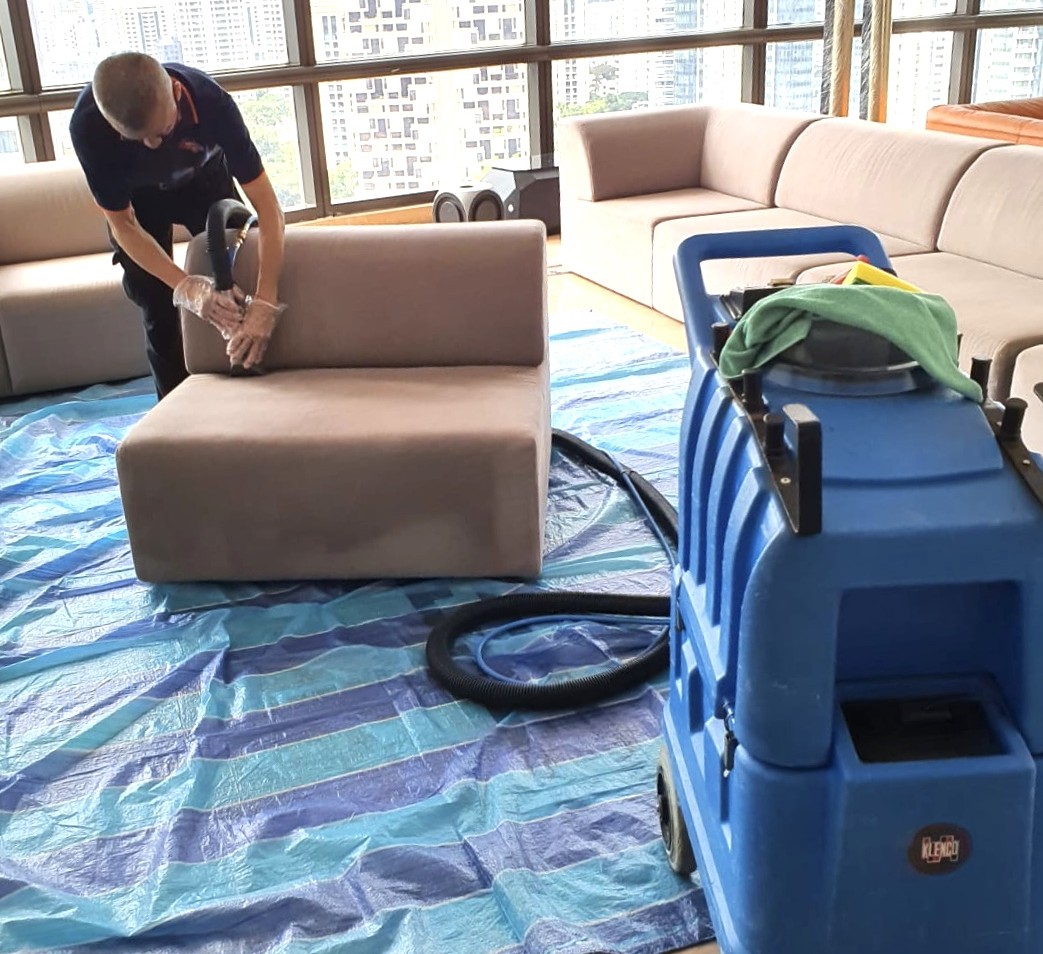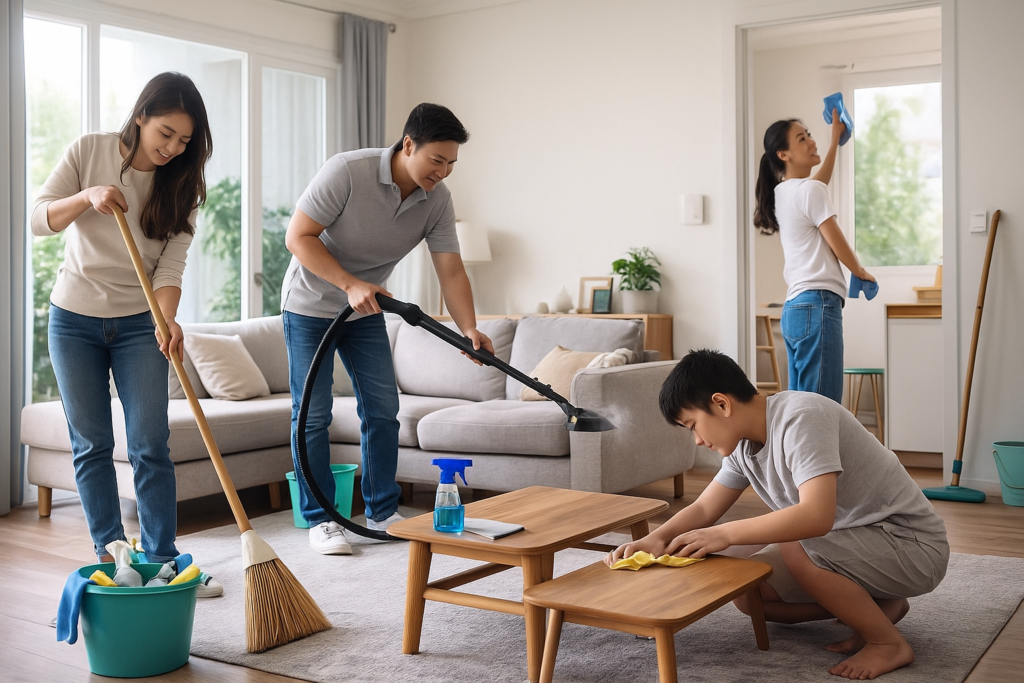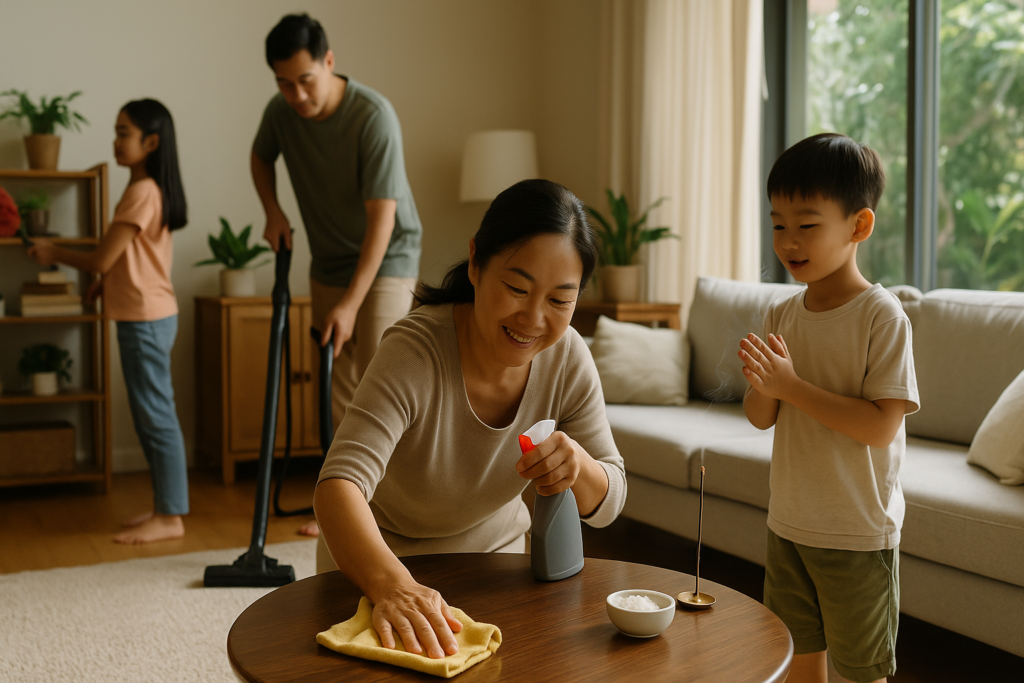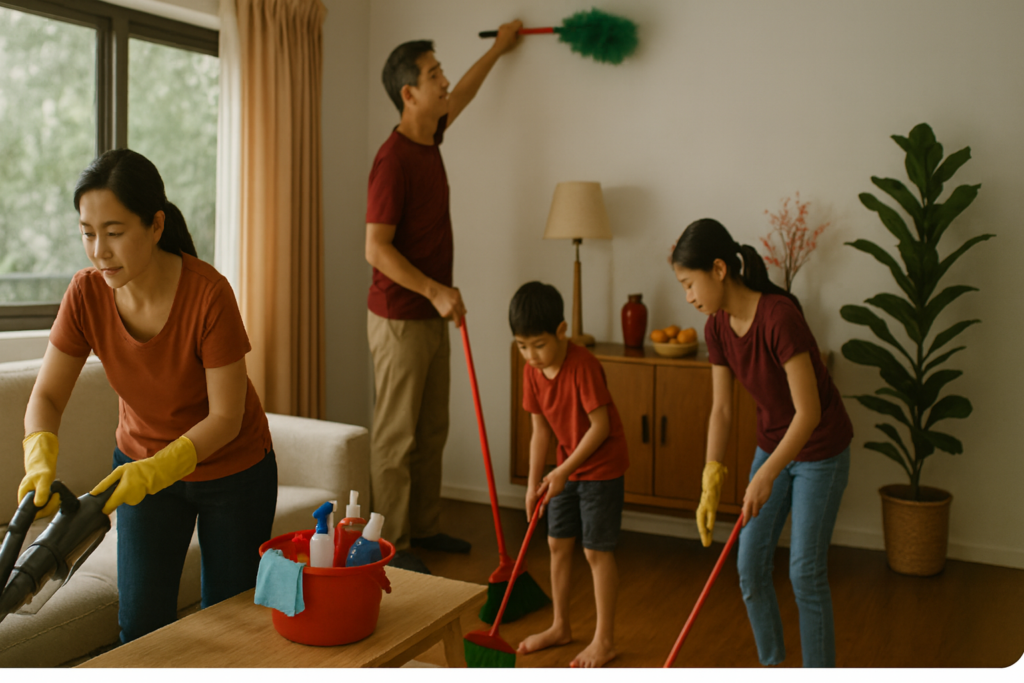
Sofas take a beating. Between muddy paw prints, tipped-over wine glasses, and surprise accidents, it doesn’t take long for stains to set in. Whether you’re dealing with pet mishaps or the aftermath of a casual get-together, the quicker and smarter you act, the better your chances of saving the upholstery.
Here are 12 practical, effective tips for removing common sofa stains caused by pets and drinks. These methods are safe, home-tested, and adaptable to most fabric types.
Pet Messes: How to Clean Up After Accidents
1. Act Fast on Fresh Pet Urine
Time is critical. Pet urine is acidic and can damage fabric fibres and cause long-term odours if not treated quickly. Use paper towels or a clean cloth to blot up as much liquid as possible. Avoid scrubbing—this spreads the stain and pushes it deeper into the fibres. Once you’ve blotted thoroughly, mix equal parts white vinegar and water in a spray bottle and lightly mist the affected area. Vinegar neutralises ammonia in urine and breaks down stain particles. Follow up by blotting again, then apply a generous amount of bicarbonate of soda to neutralise any lingering odour. Allow it to sit for at least four hours (overnight if possible) before vacuuming the area clean.
2. Tackle Set-In Pet Odours with Enzyme Cleaners
Set-in stains or older messes, especially those from urine or Vomit, require more than vinegar and baking soda. Enzyme-based cleaners target the roots of pet stains by breaking down the proteins and bacteria responsible for strong smells. They work by digesting the proteins and bacteria responsible for smells and discolouration. Look for enzyme-based solutions specifically designed for upholstery and pet stains. Spray the stain directly, allow it to sit as instructed (usually 10–15 minutes), then blot with a dry cloth. Repeat if necessary. Before applying the entire stain, try it in a discreet area to ensure it doesn’t damage or discolour the fabric.
3. Remove Hair Before Treating Stains
Pet hair often embeds itself into the fabric, especially on woven or textured upholstery. Before you even begin stain treatment, remove as much hair as possible to prevent it from mixing with cleaning products or holding odours. A slightly dampened rubber glove rubbed across the fabric works well, or you can use a lint roller or upholstery brush. Removing loose hair improves the effectiveness of any cleaning solution and leaves the sofa fresher overall.
4. Address Vomit with a Mild Dish Soap Solution
Vomit not only leaves stains but can also create persistent odours and promote bacterial growth. Start by removing any solid matter gently using a paper towel or plastic spatula. Combine a small amount of gentle, colour-free dishwashing liquid with warm water. Soak the cloth in the solution, then gently press it onto the stain without oversaturating the fabric. Work carefully from the edges toward the centre to stop the stain from spreading. Once the area is clean, wipe it down with a separate cloth dampened with plain water. Finish by patting the spot dry with a towel and let it air dry thoroughly.
5. Use Baking Soda for Pet-Related Smells
Even after stains are visibly removed, lingering pet smells can make a sofa feel unclean. A natural way to deal with smells is to dust the area with baking soda (bicarbonate of soda). Leave it there overnight to absorb any deep-seated odour. It gives it time to absorb deep-seated odours trapped in the fabric. Vacuum thoroughly using an upholstery attachment. Repeat weekly as part of regular maintenance if pets often use the furniture.
6. Invest in a Pet-Friendly Fabric Protector
Once your sofa is clean, it’s a good idea to add a layer of protection. Fabric protector sprays create an invisible barrier that repels liquid and resists future stains. Choose a brand that’s labelled safe for pets and children, as these will be free from harmful chemicals. Apply as directed, usually in a well-ventilated area, and allow to dry fully before use. This step can significantly reduce future cleaning efforts.
Drink Stains: Managing Spills Before They Set
7. Dab, Don’t Rub Wine or Juice Stains
Spills from red wine or juice can stain quickly due to the natural pigments and sugars present. The first rule is never to rub. Instead, gently blot the spill with a dry, clean cloth or paper towel. After absorbing as much as possible, mix hydrogen peroxide and mild dishwashing liquid in equal parts. This mixture is effective for breaking down the stain. Apply the mix using a cloth, leave it to work for a few minutes, then lightly wipe over the area with water to clear it off. Always test this solution on a hidden part of the fabric first to check for any discolouration.
8. Cold Water First for Coffee Stains
Coffee contains tannins that can be permanently set if exposed to heat. Begin by pressing a dry cloth firmly over the spill to soak up as much liquid as possible. Then apply cold water to the area—never hot. If the stain’s still visible, try mixing in a splash of white vinegar — it can help loosen what’s left. When it lifts, dry the spot with a clean cloth and leave it to air out.
9. Beer and Soft Drink Spills Need Neutralisation
Beer and fizzy drinks often contain sugar and colourants, which leave a sticky residue even after the liquid is gone. Start by blotting the spill. Then, mix equal parts water and white vinegar in a spray bottle and lightly mist the stained area. Vinegar helps cut through sugar and neutralises any lingering odour. Dab with a clean cloth until the fabric feels residue-free, then dry with a towel.
10. Tackle Tea Stains with Glycerine
Tea, like coffee, contains tannins that can bond with fabric fibres. Glycerine is particularly effective for loosening these types of stains. Stir together the same amount of glycerine and water, then gently press the solution onto the stain with a cloth. Let it sit for 10–15 minutes. Afterwards, dab the area with a damp cloth to lift the solution and stain. Repeat if necessary, then dry gently with a clean towel.
11. Use Steam for Deep-Set Drink Stains
If drink stains have penetrated deep into the fabric or cushions, steam cleaning can help lift them. A handheld steam cleaner is ideal for this purpose. Glide the nozzle steadily across the surface rather than lingering in one spot. It helps avoid overheating sensitive materials. Steam helps break up dried particles and sanitises the surface. Not all sofas are steam-friendly, so it’s best to check the care label before starting — especially with delicate materials.
12. Consider Professional Help for Delicate Fabrics
Delicate materials such as silk, velvet, or blends with rayon can react poorly to at-home cleaning methods. In these situations, it’s safer to consult a professional upholstery cleaning service. Experts have access to specialised tools and fabric-safe solutions that minimise the risk of damage. If you’re unsure who to contact, TotalCleanz’s upholstery and Sofa Cleaning service is a trusted option for stain treatment and sofa restoration in your area.
General Tips for All Sofa Stain Removal
- Try any cleaner out on a tucked-away bit of the fabric first — just to be sure it won’t stain or damage anything.
- Don’t soak the fabric — too much moisture can cause mould or leave behind water marks.
- Familiarise yourself with your sofa’s fabric code (typically W, S, WS, or X) to choose the safest cleaning approach.
- Use white or colourfast clothes to prevent dye transfer onto upholstery.
- Vacuum the entire area after it dries to lift any loosened dirt or cleaner residue.
Why Acting Fast Matters
Many common sofa stains become permanent not because of their source but due to delayed or incorrect treatment. Organic substances like pet urine, wine, and milk-based drinks set quickly and can alter fabric colour and structure. Acting within minutes—blotting, neutralising, and lifting the stain—gives you the highest chance of complete removal.
Having a basic cleaning kit on hand reduces stress and increases response time. Here’s what to keep nearby:
- Clean white cloths or towels
- Spray bottle with vinegar-water solution
- Mild, colour-free dish soap
- Enzyme cleaner for organic stains
- Bicarbonate of soda
- Lint roller or upholstery brush
When to Call a Professional
Some stains are better left to the experts — especially if you’re dealing with delicate fabrics like velvet, silk, or blends that don’t react well to water or heat. Trying to clean these at home can easily lead to discolouration or damage. In cases like this, it’s safer (and usually cheaper in the long run) to call in professionals. A team like TotalCleanz brings the right tools, fabric know-how, and safe treatments to handle tricky stains properly. If your stain persists after a thorough DIY attempt—or if your sofa material is marked “S” or “X”, it’s best to let professionals handle it.
Conclusion
Sofa stains happen. Whether from your playful pet or a clumsy guest, they don’t need to be permanent. With the right supplies, proper method, and a bit of patience, most stains can be managed at home. Still, know your limits—especially when dealing with delicate or valuable furniture.
Looking for expert help? Contact TotalCleanz today to restore your sofa professionally and safely.





